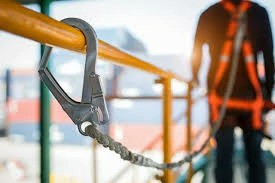Essential Guidelines for Conducting Effective Risk Assessments Before Working at Heights
When it comes to workplace safety, ensuring that all measures are taken to prevent accidents is paramount, especially in fields involving working at heights. One of the most effective tools in this regard is a comprehensive risk assessment. This article will delve into the significance of risk assessments, present a step-by-step guide on executing them, and discuss how proper training prepares workers to handle potential hazards efficiently.
The Importance of Risk Assessments in Working at Heights
Risk assessments are essential for a number of reasons:
- Accident Prevention: Identifying risks before they lead to accidents is critical in safeguarding workers.
- Regulatory Compliance: Many regions require organizations to conduct risk assessments as part of workplace compliance standards.
- Enhanced Safety Culture: A proactive approach to identifying and mitigating hazards fosters a safety-conscious work environment.
Step-by-Step Guide to Conducting Risk Assessments
The following structured approach outlines how to conduct effective risk assessments before any working at heights tasks:
1. Identify the Hazards
Begin with a thorough inspection of the work environment:
- Look for unguarded edges, overhead hazards, and any potential fall risks.
- Assess equipment and tools that will be used.
- Consider environmental factors like weather conditions.
2. Evaluate the Risks
Once hazards are identified, the next step is to evaluate the level of risk:
- Determine the likelihood of an incident occurring.
- Assess the potential severity of injuries resulting from a fall.
- Implement a risk rating scale (e.g., low, medium, high) to categorize the risks.
3. Implement Control Measures
Control measures should address the risks identified:
- Use safety equipment such as harnesses, guard rails, or scaffolding.
- Establish protocols for safe working practices.
- Ensure regular maintenance of equipment used in heights work.
4. Monitor and Review
Continuous evaluation of risk assessments is vital:
- Regularly review control measures for effectiveness.
- Update risk assessments when job conditions change or new hazards are introduced.
Common Risk Factors to Consider
While each worksite is unique, certain common risk factors should always be considered:
- Equipment Failures: Ensure all access equipment is in safe working order.
- Human Factors: Worker fatigue, inexperience, or lack of training can increase risks.
- Environmental Conditions: Factors like wind, rain, or extreme temperatures can elevate risk levels.
How Training Prepares Workers to Assess Hazards Effectively
Comprehensive training is crucial for allowing workers to perform accurate risk assessments:
- Enrolling in a Working at Heights Course teaches practical skills and safety protocols.
- Certification through a Working at Heights Safety Course ensures that workers are familiar with their responsibilities.
- Online training options provide flexibility for workers to learn at their own pace.
By prioritizing Working at Heights Training, employers create a safer work environment, reducing the likelihood of incidents.
Case Studies: Risk Assessment Success Stories
Case studies emphasize the impact of proper risk assessments:
- Case Study 1: A construction company implemented a new risk assessment protocol that helped reduce fall incidents by 40% over two years.
- Case Study 2: An industrial site re-evaluated its existing safety measures after a risk assessment and improved overall compliance and safety metrics.
Conclusion
Conducting comprehensive risk assessments before any working at heights task is not just a regulatory requirement but a fundamental practice for ensuring worker safety. Protect your workforce by integrating these guidelines into your safety protocols and investing in certified working at heights training for your team.
For more information on working at heights training, please visit our course page. For inquiries, contact us at [email protected].



 349,500 Offered Certificates
349,500 Offered Certificates
 24/7 Online Training
24/7 Online Training
 Money Back Guarantee
Money Back Guarantee
 Fully Accredited Courses
Fully Accredited Courses
